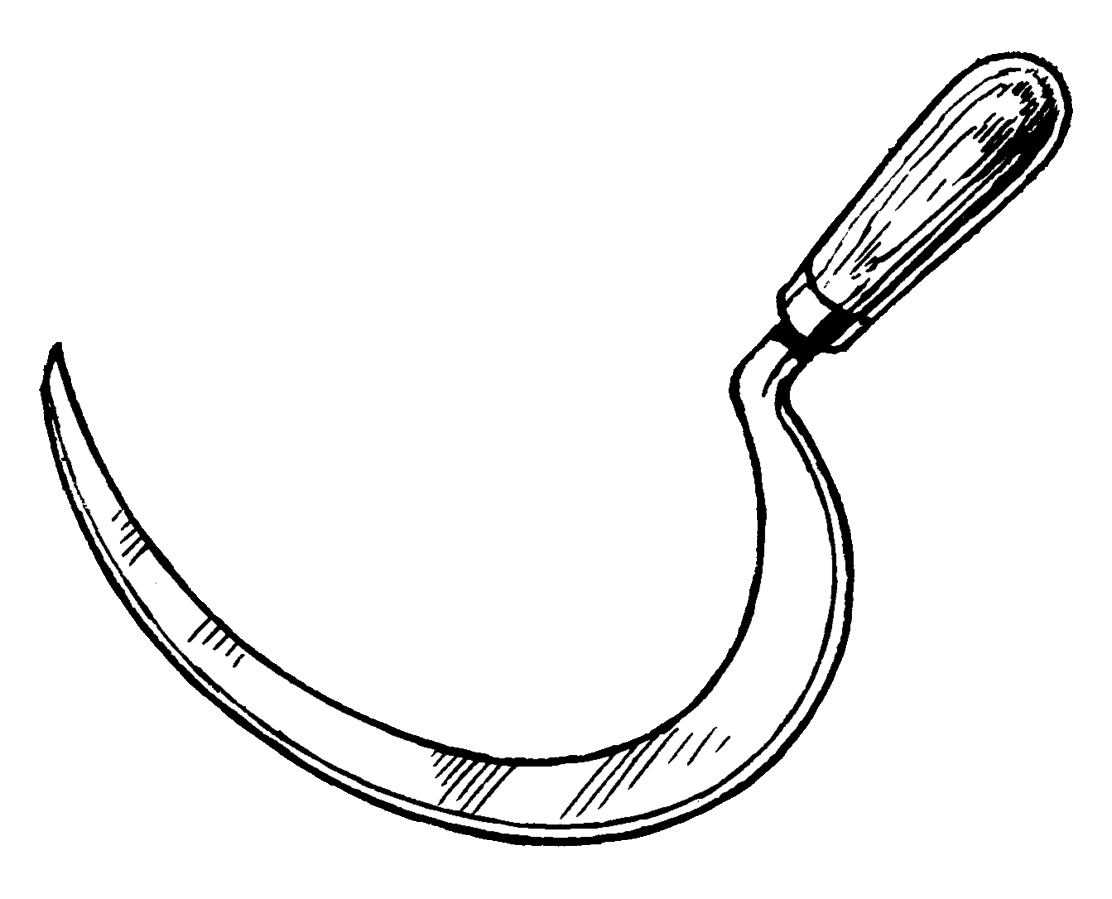 Then there was the watering if it was needed, and usually, there was a good deal of weeding to do. When crops ripened, or were ready to eat, they would need to be picked or harvested. Many would say that a farmer’s work never ends.
Then there was the watering if it was needed, and usually, there was a good deal of weeding to do. When crops ripened, or were ready to eat, they would need to be picked or harvested. Many would say that a farmer’s work never ends. 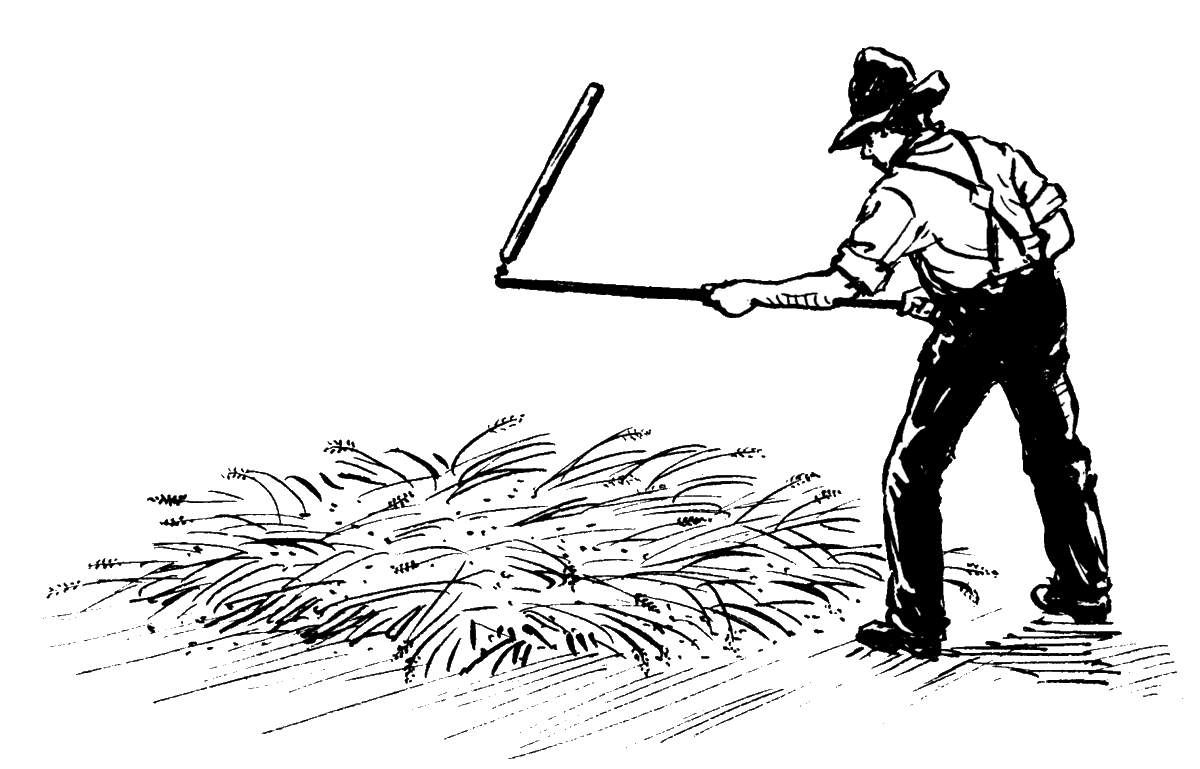
Being a farmer was a big job. They had many things to do and worked from dawn to dark. First, farmers would clear the land. Plowing and planting would come next.
 Then there was the watering if it was needed, and usually, there was a good deal of weeding to do. When crops ripened, or were ready to eat, they would need to be picked or harvested. Many would say that a farmer’s work never ends.
Then there was the watering if it was needed, and usually, there was a good deal of weeding to do. When crops ripened, or were ready to eat, they would need to be picked or harvested. Many would say that a farmer’s work never ends.
When not working in the fields, farmers were busy with many chores. Tools needed to be sharpened and fixed. After a while wagons, wagon wheels, and other things needed to be repaired. Many farmers had livestock or animals, like horses, cows, hogs, chickens, and sheep. They needed to be fed, cleaned up after, and cared for in many ways. Barns and fences needed to be built. Then they would need to be kept up. Cows or goats might need to be milked.
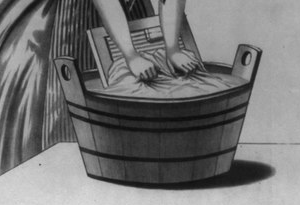
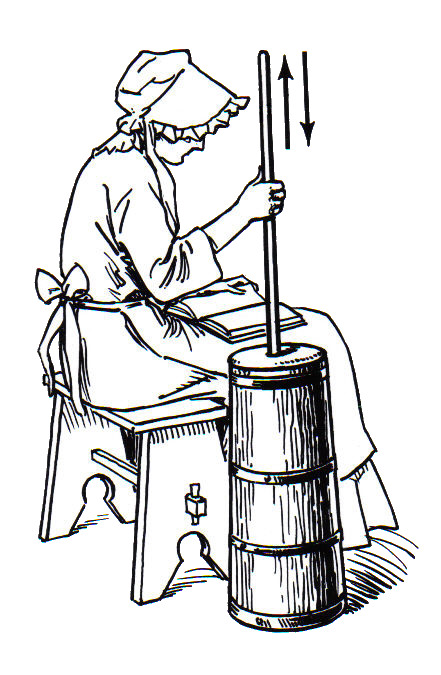 Meals needed to be prepared. There was the washing of clothes, and clothes would need to be made and mended too.
Meals needed to be prepared. There was the washing of clothes, and clothes would need to be made and mended too.
Food had to be taken care of so it could be used and kept until it was needed. Meat was preserved or treated and stored so it would not spoil. They would treat it with salt for a couple of weeks and then smoke it. The cream from their milk was made into butter. To make butter families churned the cream that came off of the milk so it would make butter. They took their corn and ground it up. It could take an hour a day to grind it into the corn meal they would eat.

Because farmers did not have tractors and modern machines, animals were used to plow the fields. The animals were needed for the heavy work. Draft animals like oxen, mules, and horses were some of the main animals that could be used to do that work.

Farmers grew many crops in the Colonies. Corn was one of the main ones. The corn was ground into corn meal which so many of them used. Some of the other main crops were tobacco, rice, indigo, wheat, oats, cotton, flax, and hemp. The tobacco, rice, indigo, cotton, and hemp were grown in the southern colonies.
There were several types of farmers. Yeoman farmers owned their farms. Tenant farmers worked for someone else and were given food and a place to stay. They did not own the land, just used it. Tenant farmers split any profits with the owner. And then there were laborers. The laborers worked from day to day and did not own the land. They just worked for someone else. There were also slaves. Some colonists bought slaves. The slave owners had slaves do whatever work they wanted to have them do.
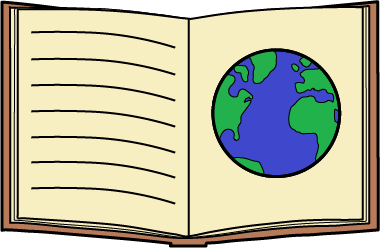
http://education-portal.com/academy/lesson/13-colonies-colonial-life-economics-politics.html;
Northern Colonies- Mayflower Compact, governments- http://www.ushistory.org/us/3b.as; The Writer’s Guide to Everyday Life in Colonial America by Dale Taylor, p. 40, Rhode Island p. 49;
Middle Colonies- New Jersey government- The Writer’s Guide to Everyday Life in Colonial America by Dale Taylor, p. 55; Pennsylvania colony (Freedoms);
The Extraordinary Suzy Wright: A Colonial Woman on the Frontier by Teri Kanefield, p. 9;
http://www.socialstudiesforkids.com/subjects/colonialtimes.htm;
Farmers- The Farmer by Wil Mara;
My Dearest Friend: Letters of Abigail and John Adams by Margaret A. Hogan and C. James Taylor; Abigail struggles with illness - her, her family, and the communities. (September 1775, pp. 74 and 75.)
Women- The Extraordinary Suzy Wright: A Colonial Woman on the Frontier by Teri Kanefield, p. 14 (rights);
http://www.history.org/almanack/life/trades/traderural.cfm;
http://www.history.org/almanack/life/trades/traderural2.cfm;
http://www.ushistory.org/us/5e.asp;
http://www.usahistory.info/colonial/customs.html;
http://www.history.org/History/teaching/dayInTheLife/webactivities/dress/dress.cfm (Colonial dress);
Two Sets of clothes- The Writer’s Guide to Everyday Life in Colonial America by Dale Taylor pp. 254)
http://www.williamsburgkids.com/people/;
http://www.youtube.com/watch?v=ZeCXLiwWqKw (Making linen from flax);
http://www.ushistory.org/us/5a.asp;
http://www.ushistory.org/us/5b.asp;
http://www.history.org/kids/visitUs/colonialPeople/slave.cfm;
http://www.ushistory.org/us/1a.asp;
http://www.pbs.org/ktca/liberty/perspectives_daily.html#;
Abigail Adams by Kem Kapp Sawyer; DK Publishing 2009;
A Museum of Early American Tools by Eric Sloane;
http://www.foodtimeline.org/foodcolonial.html;
www2.census.gov/prod2/decennial/documents/00165897ch01.pdf- Population statistics;
Wool and Flax- The Writer’s Guide to Everyday Life in Colonial America by Dale Taylor pp. 252-253;
My Dearest Friend: Letters of Abigail and John Adams by Margaret A. Hogan and C. James Taylor p. 162
Farming-Flail by Pearson-Scott-Foresman- Wikimedia Commons;
Scythe- Farm tool-Sickle by Pearson-Scott-Foresman- Wikimedia Commons;
Wash tub and scrub board -zoomed and edited- by Popular Graphic Arts for Champion American soap powder LCCN2005694421.tif from the Library of Congress- Wikimedia Commons;
Churn by Pearson-Scott-Foresman- Wikimedia Commons;
Horse by Papapishu- Openclipart.org;
Farmer-Johnny-Automatic- Openclipart.org
ATOS- 5.0
Flesch-Kincaid Level- 4.79
SMOG Index- 7.42